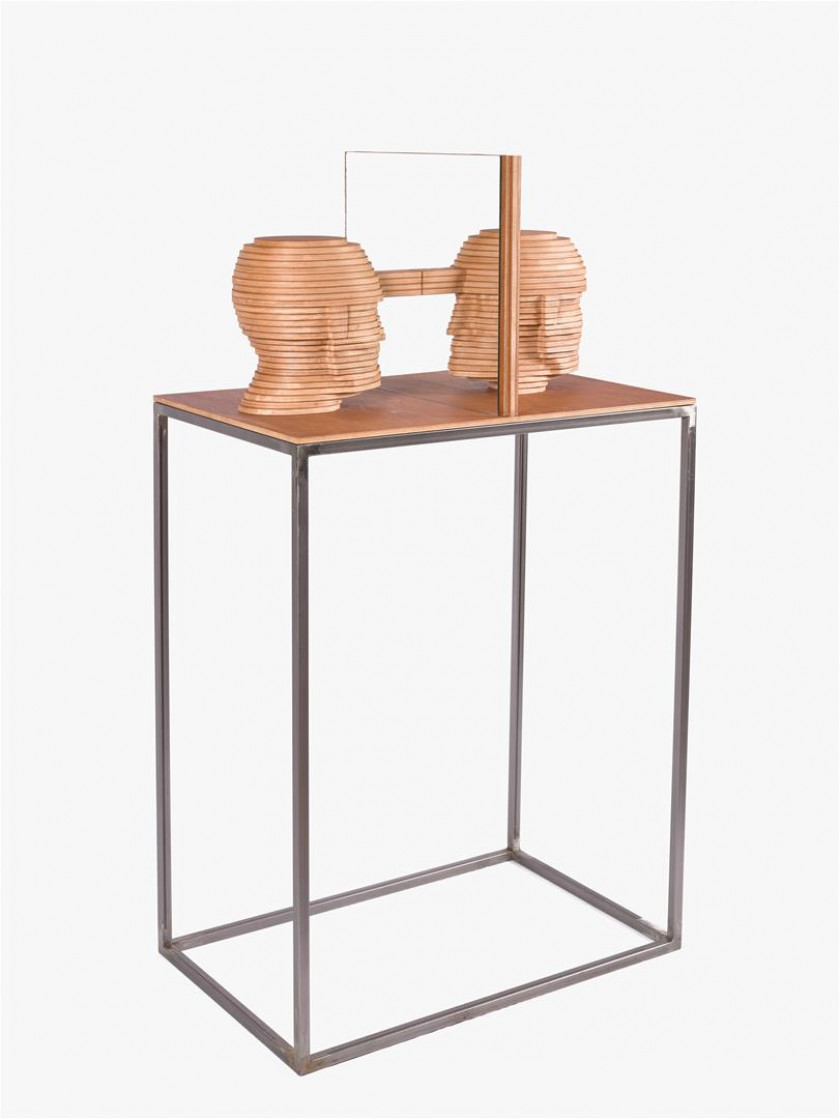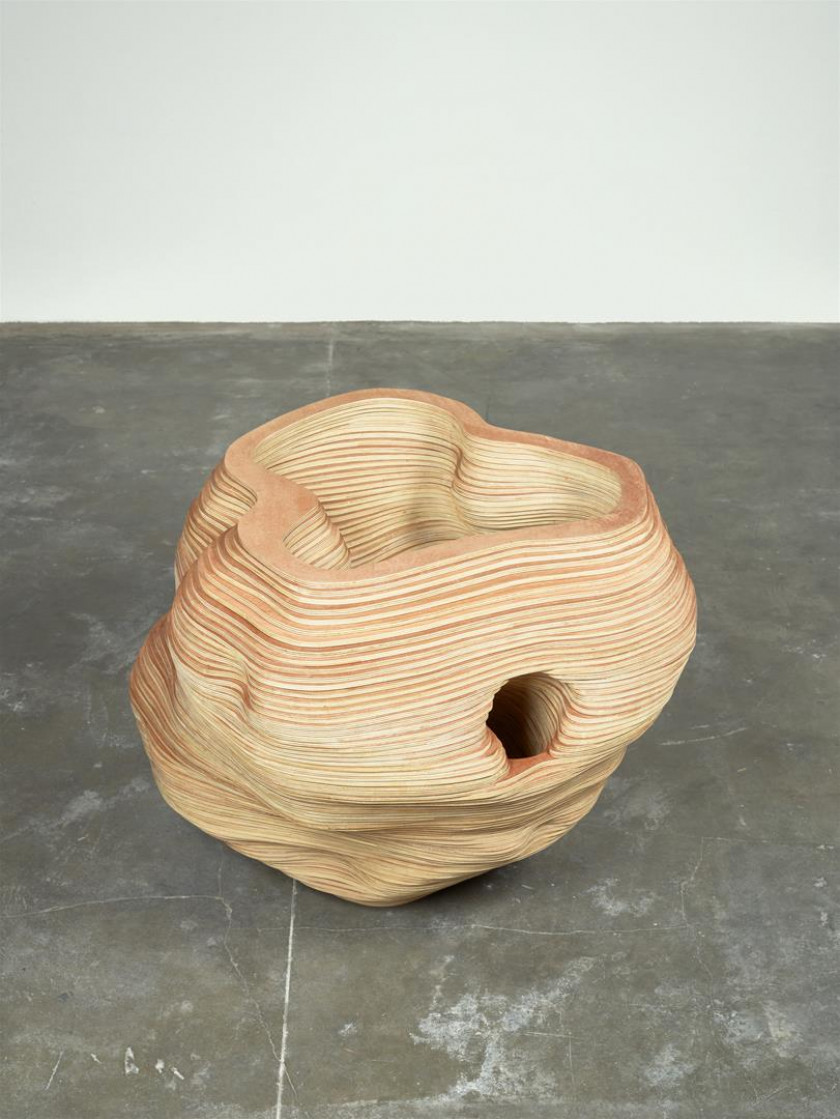Sem título [Untitled]
sculpture


2002
Wood, iron and mirror
143 x 80,3 x 50,3 cm
In this work, there is a confrontation with the history of sculpture, taking us directly to the interiority of the artistic discourse, and to the questioning of the spatial representation and the frontal condition of classic sculpture. The attention given to the representation of space in neo-classic painting and its research on the investigations and the optics works seem to place this work in a suspension between the visual and perspective representation of objects (hypothetical ironic evocation of the work Underweysung der messung, by Dürer) and the scraping, or subversion, of the plinth, which now appears as the frame of a hollow space, a merely enunciated space – a tri-dimensional drawing – leading, together with the mirror, the element that directs and expands space itself, to an intentional lightness of the sculpture.
Simultaneously, this work evokes a temporal dimension, present in all artistic works of Rui Sanches, which manifests in what the artist calls “time-history”, and in the form of energy, that circulates between the various planes of the sculpture. The construction of the heads, achieved by modular overlapping, also subverts the traditional process of modelling in sculpture, and, at the same time, conciliates the industrial feature with an ironic and apparently organic appearance.
José Carlos Pereira
